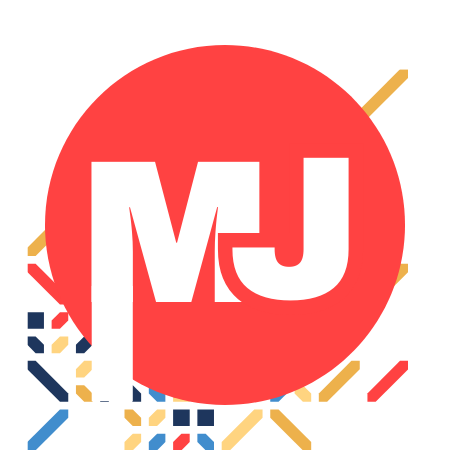
BOSCH REXROTH PPC CAMPAIGN REVAMP FOR BUSINESS UNITS ACROSS INDUSTRIAL AUTOMATION
Google Paid Search
Keyword Research & Targeting
Ad Copy Creation
Ad Extensions
Bid Strategy
A/B Testing
Conversion Tracking
Performance Monitoring
Bosch Rexroth is a leading global provider of industrial automation and technology solutions, serving multiple business units including assembly technology, robotics, hydraulics, linear motion, and industrial automation. With over 30,000 employees and a presence in more than 80 countries, Bosch Rexroth focuses on offering high-quality, innovative products and solutions to various industries such as automotive, manufacturing, energy, and construction.
Project Objectives
Increase traffic and click-through rates (CTR) by revamping underperforming PPC campaigns.
Improve messaging relevance by aligning ad copy with specific business units and their end-use applications.
Reduce wasted spend and increase lead quality through smart bidding and segmentation.
Optimize landing pages to improve conversion rates and campaign ROI.
Campaign Audit (Pre-Optimization)
Before optimizing, I conducted a full audit of Bosch Rexroth’s existing campaigns. Key findings included:
Unorganized structure: Campaigns grouped multiple business units together, making targeting inefficient.
Broad keyword use: Excessive broad match terms and minimal negative keywords led to irrelevant traffic.
Low-quality ad copy: Messaging was generic and failed to speak to specific industries or solutions.
Underused ad extensions: Missing or misaligned extensions reduced visibility and impact.
Tracking gaps: Incomplete conversion tracking made it hard to attribute leads to specific business units.
Poor impression share: High-value industrial verticals were underfunded and underperforming.
These issues became the foundation for a complete campaign restructure.
Challenges
Low CTR and poor engagement due to irrelevant or generic messaging.
Wasted spend from broad targeting and lack of segmentation.
Inconsistent landing pages and poor message match between ads and onsite content.
Outdated bidding strategies and limited optimization efforts.
Strategic Approach
Campaign Restructuring by Business Unit
Segmented campaigns by business unit: Hydraulics, Linear Motion, Industrial Automation, Mobile Applications, etc.
Created dedicated ad groups, keyword lists, and targeting for each vertical (e.g., "hydraulic pumps for excavators").
Built campaigns for high-priority industries like automotive, aerospace, and heavy equipment.
Ad Copy Overhaul
Rewrote ad copy to highlight benefits and end-use applications for each business unit:
Hydraulics: “Efficient Hydraulic Systems for Heavy Machinery – Increase Uptime and Productivity.”
Automation: “Streamline Manufacturing with Intelligent Factory Automation Solutions.”
Mobile Applications: “Reliable Drive Systems for Off-Highway Vehicles – Built for Performance.”
Added industry-specific CTAs such as “Explore Custom Hydraulic Solutions.”
Audience & Keyword Optimization
Performed detailed keyword research for each application.
Built audience segments by job title, industry, and buying intent (e.g., engineers, procurement leads).
Used negative keywords and match types to control traffic quality.
Smart Bidding & Budget Efficiency
Introduced Google Ads automated bidding strategies (Target CPA, Maximize Conversions).
Applied device and time-based bid adjustments to prioritize mobile and high-intent time windows.
Paused low-performing ad groups to reallocate spend toward high-performing ones.
Landing Page Optimization
Aligned landing pages with ad copy and keyword intent.
Updated page structure, meta tags, internal links, and header formatting.
Enhanced content with visuals, product specs, industry case studies, and proof points.
Conducted A/B testing to improve conversion rates.
Cross-Channel Integration with LinkedIn Ads
Created LinkedIn campaigns aligned with business units and verticals.
Used job title, industry, and seniority targeting to reach engineers, operations managers, and procurement leads.
Ran Sponsored Content and Lead Gen Forms that addressed industry pain points and product benefits.
Results
Google Ads
CTR improvement: More relevant campaigns increased engagement across all business units.
40% decrease in CPC overall, with up to 80% decrease in the worst-performing ad groups.
Better lead quality from targeted messaging and industry-specific segmentation.
Higher ROI from budget reallocation and conversion-focused optimizations.
LinkedIn Ads
200%+ increase in conversion volume, driven by persona-based segmentation and job title targeting.
Reduced unqualified leads through intent-driven audience filters and retargeting.
Improved click-through rates with refined messaging, better creative formats, and A/B testing.
Higher lead-to-MQL conversion rates from LinkedIn Lead Gen Forms due to better targeting and content alignment.
Conclusion
By restructuring the PPC program around Bosch Rexroth’s business units and industry-specific applications, we dramatically improved campaign performance. The combination of relevant messaging, audience segmentation, smart bidding, and landing page alignment led to better engagement, higher-quality leads, and a more efficient use of budget across both Google Ads and LinkedIn.
This created a scalable foundation for long-term growth—and proved that tailored messaging, when combined with platform-specific strategy, drives real business outcomes.



